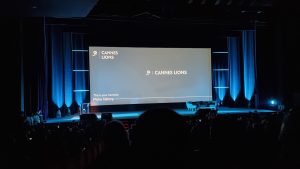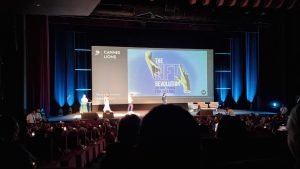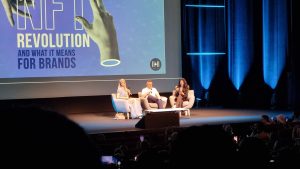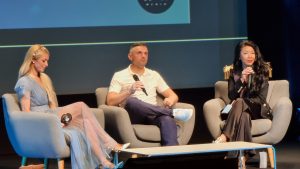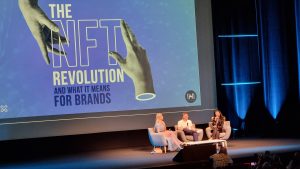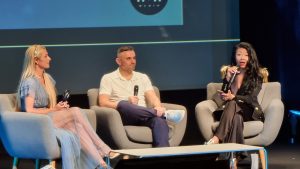CANNES, FRANCE — “Have you done the 50 hours of homework?” founder of VaynerX and Vaynermedia, Gary Vaynerchuk finished his talk called “The NFT Revolution” at the Cannes Lions International Festival of Creativity with this question. He urged his audience to do the research before making an opinion on NFTs (as you would with any topic, really)
To backtrack a bit, a non-fungible token (NFT), simply put, is a digital asset one owns that the whole world is aware of. This was Vaynerchuk’s simplified definition for the audience. The whole talk was used more to get the audience familiar with NFTs and to give the industry a heads up that this is the next big thing. He compared the coming of NFTs or Web3 to the coming of the internet or Web2; how the very same people who thought the internet was gimmicky also hated the iPhone for its lack of buttons. He urged the audience to believe: This is indeed the next big thing.
What’s interesting is the mention of a better connection with one’s audience. He talked about how NFTs, given the nature of the technology, allow a brand to focus on depth and not reach. The relevance of NFTs comes from the fact that they are consumed by their community — this is not simply an ad that hits an eyeball, as we all know no one watches ads for fun.
NFTs are purchased by an artist’s community and show the buyer’s deep engagement and support for the art (or the artist). I believe Vaynerchuk wanted to make a comparison between the ad and the NFT: an ad, that may reach millions, show very little about the interest of the consumer in a brand; a very stark difference to NFTs that signify a customer decided to go through the process of buying this piece and spending money on it.
Furthermore, Vaynerchuk says in 15 years NFTs will go from collectibility with a hint of utility to utility with a hint of collectibility. As we all know, NFTs are hyped now and are bought and sold based on their popularity; the value is based on collectibility. Vaynerchuk gave the example of Chanel and how the brand issues NFTs as receipts with 5% royalty. He explained that when someone buys a Chanel bag with an NFT, assuming this person becomes famous, the second buyer buying the bag from this celebrity also gets value from the NFT knowing this item came from a specific person. He didn’t mention this, but I should say that it also allows the customer to know the bag is original given the blockchain technology. This creates value for the brand (through revenue), as well as for the first and second customers.
I see a future where we can track everything, where security and authenticity can be guaranteed but it’s unclear to me how every brand can enter this space. I don’t see how fast-moving consumer goods, for example, will need NFTs. Apart from knowing my food is sustainable, why would I need to know where it came from or if it’s authentic? But Vaynerchuk has ignited a spark of curiosity in me and so, to follow his advice, I will start the 50 hours of research to learn about this exciting new world of Web3.

Diego Balderas Torres is Brand Lead for Maya, the all-in-one money platform that is bringing Filipinos bolder ways to master their money. He was awarded



